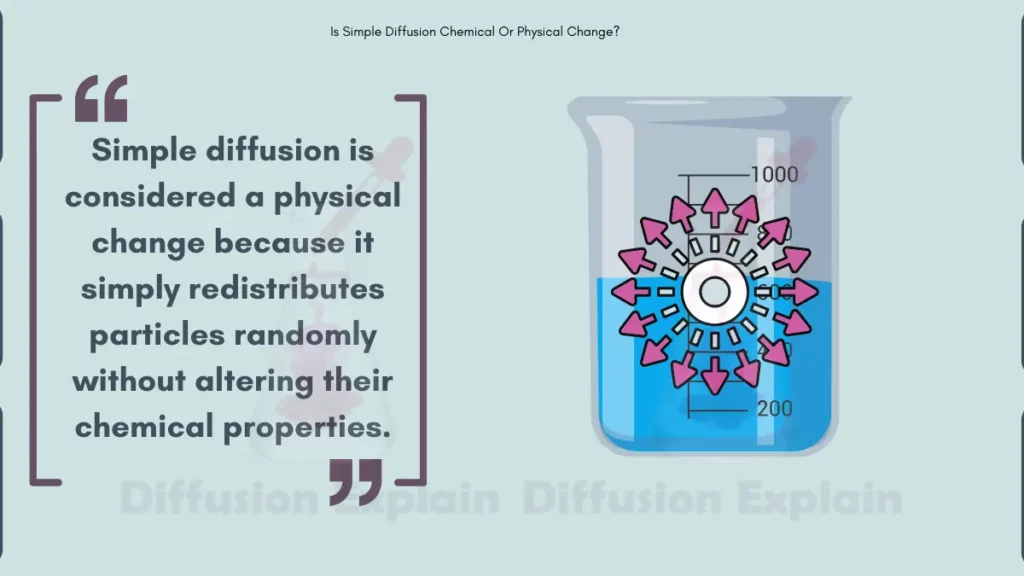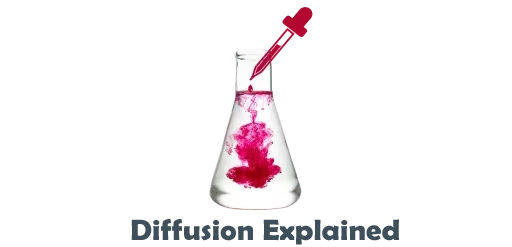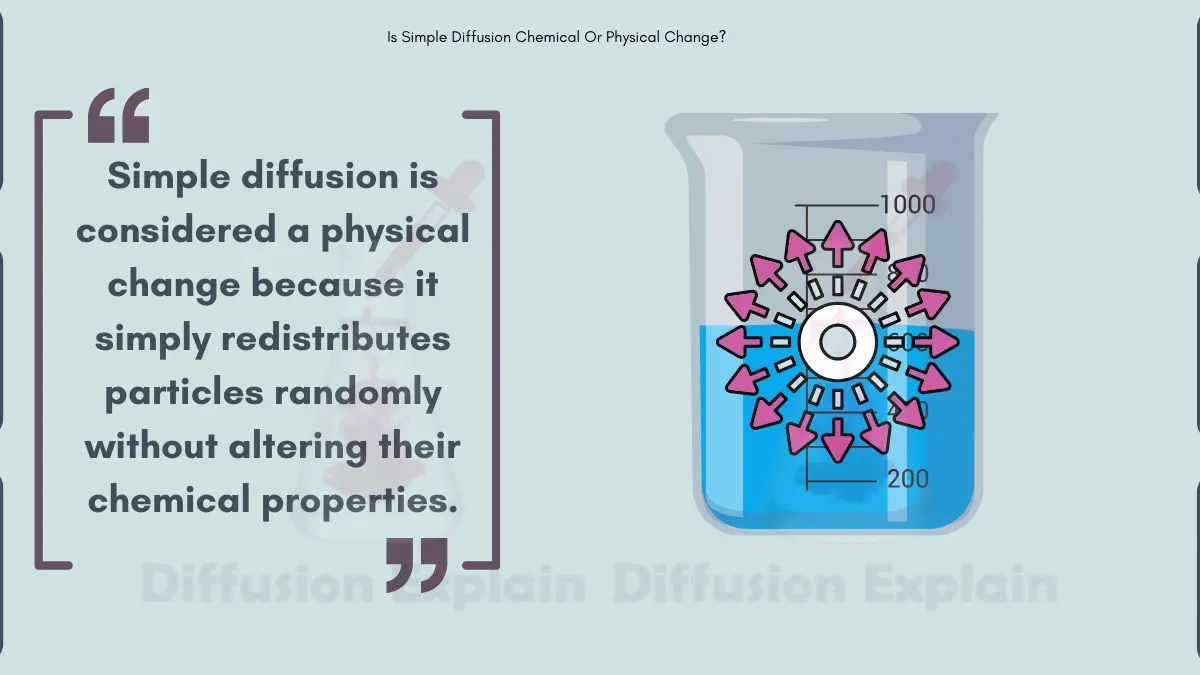Simple diffusion is considered a physical change because it simply redistributes particles randomly without changing their chemical properties. This spontaneous particle dispersal relies only on intrinsic particle motion and concentration gradients, not the formation or destruction of chemical bonds.

While chemical changes involve old chemical bonds being broken and new ones formed, which does require energy exchanges. So the fact that diffusion needs only differences in concentration highlights why it is categorized as a physical process of particle transport, not a chemical conversion demanding an input or output of chemical energy.
Reasons Why Simple Diffusion Is Physical Change?
Here are a few reasons why simple diffusion is considered to be a physical change:
Diffusion Involves the Random Motion of Particles
Diffusion is a physical process where particles of a substance move from an area of higher concentration to an area of lower concentration. It happens because particles are always in random motion, colliding with each other and change direction.
When there is a higher concentration of particles in one area, the random motions will ultimately result in more particles dispersing to areas of lower concentration over time.
No Chemical Bonds are Broken or Formed During Diffusion
A key aspect of what makes diffusion a physical change rather than a chemical change is that the diffusing substances do not undergo any chemical reactions. The individual particle identities remain the same; the only change is in their spatial distribution.
This is very different from a chemical change where substances break down and combine to form different chemical products.
Diffusion Relies on Kinetic Energy, Not Chemical Potential Energy
Diffusion occurs because particles have innate kinetic energies that drive their random motions. All that is required for diffusion is a gradient of particle concentration levels. There is no release or absorption of chemical potential energy during the process. The dispersing particles retain their original chemical structures and energies.

